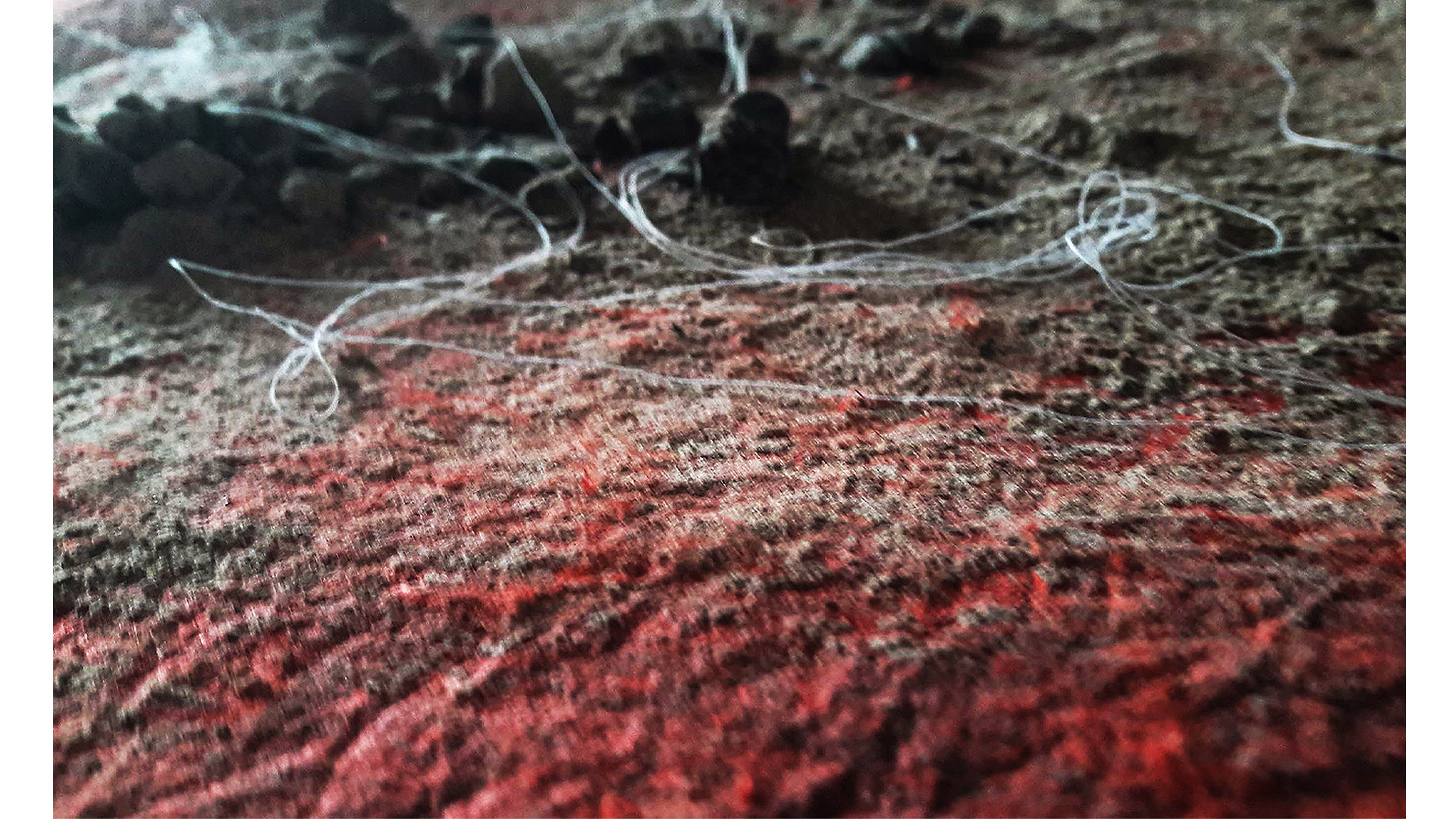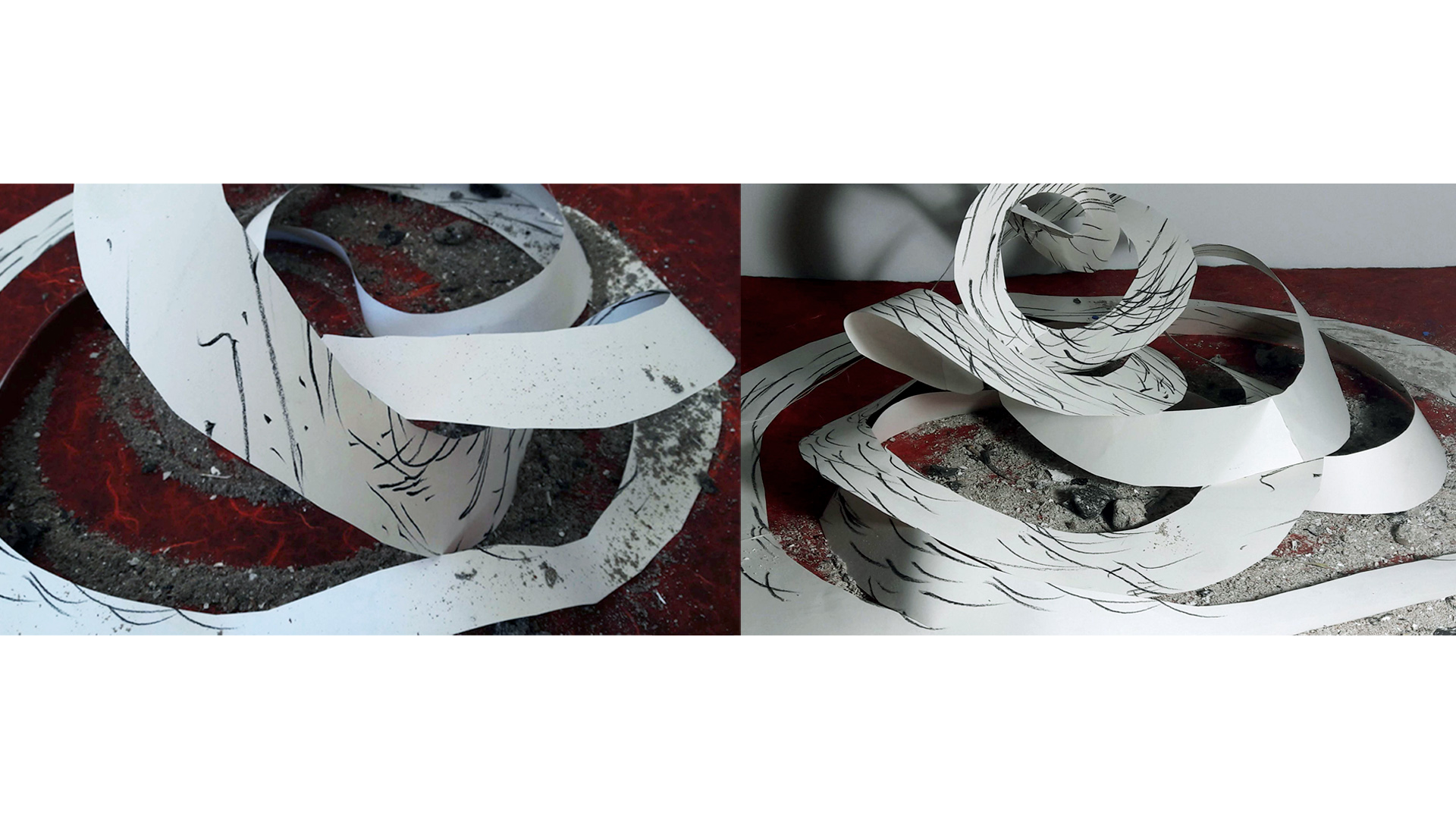Artists
Brazil
Lurdi Blauth
#5: Futuro
27.05.21 08.07.21
Lurdi Blauth is a visual artist focused on investigating the relationship and contact procedures in image reproduction media such as woodcut, metal engraving, lithography in the extended field. She also works with monotypes, graphic-pictorial elements of drawing and painting, digital, photography, artist books, engraving-object and installation. During 2019, she obtained the 3rd Prize at the International Mini Engraving Exhibition in Cantabria, Spain and won the Prize for Printing Excellence at the 5th Enter into Art in Cologne, Germany. That same year, she held the shared curatorship exchange with Ana Sartori in Paris, France.
ARTIST STATEMENT
Engraving is my main artistic language, through which I develop my reflections and poetic productions that involve the concepts of image-reproduction, ephemeral-permanence, time-space. With the gesture of recording an image, I try to create a certain permanence of an ephemeral moment and as subtle and delicate incisions appear on the surface of a matrix. I use densities and transparencies between presences and absences, whose traditional printing procedures are articulated with contemporary engraving.
ABOUT #FUTURO
Participation in the online program Together Apart—#FUTURO, prompted me to think about what we want for the future in a time of so many fears and uncertainties that afflict humanity. What could you propose as an artist in the present? How to build a future through an artistic proposal? What actions can we take in the present so that there is more respect for differences? There are many questions that affect me and encourage me to reflect on this issue.
I consider important to have the opportunity to share projects and experiences with other artists, taking as theoretical support and critical analysis from the group of coordinators from ´ace, motivating us to expand our artistic proposals.
BIO
Lurdi Blauth
1950 | Montenegro, RS, Brazil
Lives and works in São Leopoldo, RS, Brazil
EDUCATION
2005 | PhD in Visual Arts, Universidad Federal de Rio Grande do Sul, Brazil
2003 | PhD internship at the Université Pantheon-Sorbonne, Paris I, France
1995 | Master of Visual Arts, Programa de Posgrado de la Universidad Federal de Rio Grande do Sul, Brazil
EXHIBITIONS
2021 | 47% Women artists in the MACRS Collection, Museum of Contemporary Art of Rio Grande do Sul, Brazil
2020 | 10th Internacional Printmaking of Douro, Portugal
2019-2020 | Invisible Synchronies, France / Brazil, Taylor Foundation, Paris, France
2019 | International Biennial of Contemporary Prints, Trois-Rivières (BIECTR), Canadá
RESIDENCIES
2021 | Together apart—#FRONTERA, Proyecto´ace, Buenos Aires, Argentina
2021 | Together apart—#FUTURO, Proyecto´ace, Buenos Aires, Argentina
OTHERS
2015 | Travessias: lo mismo y lo otro –Curatorship- Pinacoteca da Feevale Novo Hamburgo, Brazil
2013 | Forapalavradentro – Curatorship- Espaço Cultural Teatro Feevale, Novo Hamburgo, Brazil




Related Activities
Encounters, Exhibitions
#5 | FUTURO: results
Artists in dialogue
08.07.21
“The stone that I was has softened; cleared the hole. That mud that he was washed away. We already comply. The way is clean. What will I say now? I will say: Good. Like the seed in its blindness, without knowing the tree of tomorrow.” Eisejuaz, Sara Gallardo
For this edition of Together Apart (Spanish cohort) we worked with the concept of the future: Is there a future? What is a gesture with future? How would a collaboration with the future look like?
It was impossible to put aside the feelings of intimidation or contradiction that wondering about the future brings in a pandemic context where instability precisely puts the continuity of life, even more, in crisis.
We took a conceptual-artistic approach to expand the different conceptions of the future from the Western world, moving between utopian and situated futures considerations, and with the intention, likewise, of thinking about other ways of conceiving time, not in a linear and progressive way but through “a proactive work of the nexus between the past and the future”. (Silvia Cusicanqui)
Together with a cohort of 14 Spanish and Portuguese-speaking artists from the American continent we initiated a process of reflection and generation of works. Those collective and individual gestures will be presented to the external public on July 8.
We worked from the sensation and reality of cancelled futures, artistic actions in social contexts where the only apparent future is precariousness. The artistic action also as an ethical gesture of reparation of the past. Other artists produced work by taking as a starting point the suspicion of the future, questioning what futures seem to be available today and pointing out limitations that exist for non-normative bodies.
Various artists identified the difficulty of thinking the idea of the future outside of a linear conception of time, and thus explored the forms of time registration offered by different technologies such as video, photo, and even mechanisms such as the wheel of a printmaking press. The manipulation of such mechanisms, and the reflection with other materials such as ashes or mirrors, allowed us to explore non-linear times and observe how different technologies allow us to expand present moments, expand what is visible to the human eye.
Processes such as recycling, fictionalization, speculative imagination were used, and research laboratories were also activated with the intention to enquiry what our senses perceive as the future. Collaborations were activated not only between the artists of the cohort but also with nature and with other species. The future as a shared secret towards which we move.
DANIELA RUIZ MORENO [ curator-in-residence ]
Related artists
#FUTURE
was the theme that inspired us in the production of the practical exercises and fueled the conceptual discussions of the fifth edition of the online program Together Apart, which took place between May 27th and June 24th, 2021.
This page compiles the results of the cohort in Spanish, which included participants from Argentina, Australia, Brazil, Colombia, Mexico, the United States, and Venezuela.
Artistas | Cohort in Spanish
Sandra Austena| Tigre, Argentina
Florencia Alborcén | Buenos Aires, Argentina
Lurdi Blauth | Sao Leopoldo, Brazil
Juan Ignacio Coronel | Córdoba, Argentina
Leonor D’ecourt | São Paulo, Brazil
Dolores Delia | Argentina connecting from Australia
Walter Karwatzki-Chagas | Porto Alegre, Brazil
Denise Koziura | Quilmes, Argentina
Bimbi Larraburu | Buenos Aires, Argentina
Cecilia Luque | Cordoba, Argentina
Frida Sofia Martínez Lerma | Chihuahua, Mexico
Marilyn Narota| Colombia connecting from New York, USA
Sebastián Nieto Ortega | Lima, Perú
Elsa Nievas | Necochea, Argentina
Nerina Rosende | Tigre, Argentina
Lusimar Torrealba | Caracas, Venezuela



